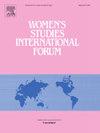当女性杀人:塞尔维亚女性杀人案件的性别比较分析
IF 1.9
3区 社会学
Q2 WOMENS STUDIES
引用次数: 0
摘要
本文以172起司法定案的杀人案为基础,包括一个涉及女性罪犯的子集,通过比较性别视角审视塞尔维亚女性犯下的杀人案。它分析了男女的社会人口特征、法律程序和量刑结果,特别关注亲密伴侣杀人案(IPH)。调查结果显示,女性施暴者通常是中年人、无业人士和社会经济边缘化人士,往往在长期遭受虐待和心理困扰的情况下作案。他们的暴力倾向于情境化和反应性。相比之下,男性罪犯表现出更大的年龄范围,更高的累犯率,以及根植于嫉妒和占有欲控制的强迫动机。司法答复因性别而有显著差异。法院更经常引用女性的减刑因素——比如精神能力下降、没有前科、照顾他人——而男性则会因为犯罪记录和过度使用暴力而面临更严厉的评估。这些模式反映了关于罪责和风险的司法推理中隐含的性别假设。通过将这些发现置于比较犯罪学和性别研究中,本文有助于对致命暴力的研究,并呼吁建立对环境敏感的法律框架。它还强调需要关于杀害妇女和基于性别的杀人的统一的、按性别分列的数据。本文章由计算机程序翻译,如有差异,请以英文原文为准。
When women kill: A comparative gender analysis of female-perpetrated homicide in Serbia
This article examines female-perpetrated homicide in Serbia through a comparative gender lens, based on 172 judicially finalized homicide cases, including a subset involving female offenders. It analyses sociodemographic characteristics, legal processing, and sentencing outcomes for both women and men, with special attention to intimate partner homicides (IPH). Findings show that female perpetrators are typically middle-aged, unemployed, and socioeconomically marginalized, often acting in contexts of prolonged abuse and psychological distress. Their violence tends to be situational and reactive. In contrast, male offenders exhibit broader age ranges, higher recidivism, and coercive motives rooted in jealousy and possessive control. Judicial responses differ markedly by gender. Courts more often cite mitigating factors for women—such as diminished mental capacity, lack of prior convictions, and caregiving roles—while men face harsher assessments based on criminal history and excessive force. These patterns reflect implicit gendered assumptions in judicial reasoning about culpability and risk. By situating these findings within comparative criminology and gender studies, the article contributes to research on lethal violence and calls for context-sensitive legal frameworks. It also underscores the need for harmonized, gender-disaggregated data on femicide and gender-based homicide.
求助全文
通过发布文献求助,成功后即可免费获取论文全文。
去求助
来源期刊

Womens Studies International Forum
WOMENS STUDIES-
CiteScore
2.50
自引率
7.10%
发文量
63
审稿时长
79 days
期刊介绍:
Women"s Studies International Forum (formerly Women"s Studies International Quarterly, established in 1978) is a bimonthly journal to aid the distribution and exchange of feminist research in the multidisciplinary, international area of women"s studies and in feminist research in other disciplines. The policy of the journal is to establish a feminist forum for discussion and debate. The journal seeks to critique and reconceptualize existing knowledge, to examine and re-evaluate the manner in which knowledge is produced and distributed, and to assess the implications this has for women"s lives.
 求助内容:
求助内容: 应助结果提醒方式:
应助结果提醒方式:


